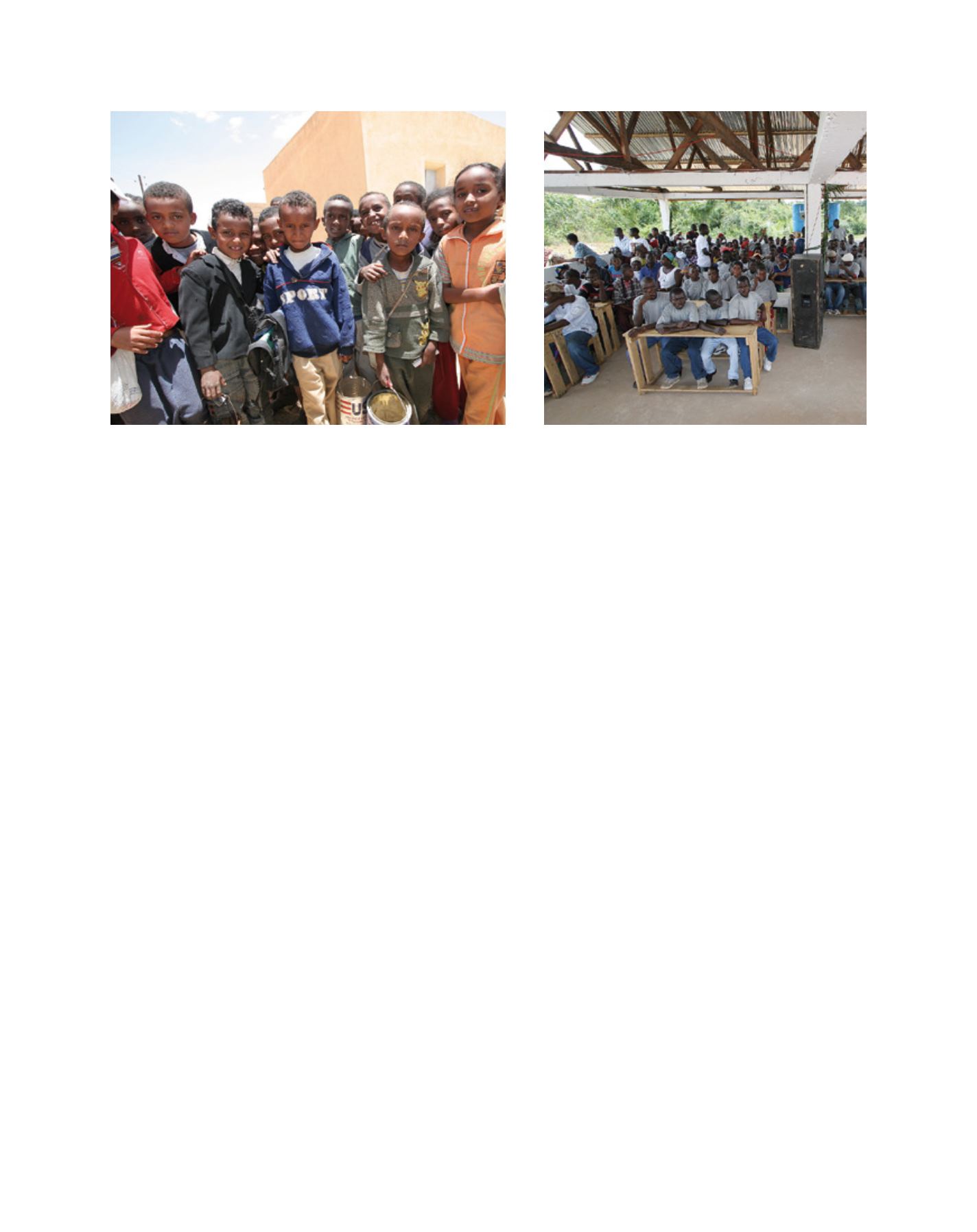

[
] 43
address waste, leakages and corruption, and to enhance
equitable and efficient use of resources.
Habitat Partner Universities
Over the last few decades, there has been a dramatic
increase in the number of universities and tertiary
institutions addressing urban challenges. The major-
ity of the world’s universities are located in or close
to cities and urban areas and, in addition to teach-
ing and research, are committed to improving the
accessibility of knowledge to the wider community.
They create new knowledge, enhance understand-
ing and help educate and train the next generation of
urban practitioners in a range of disciplines. There is
a recognized need to work collaboratively to achieve
workable solutions for urban sustainability through
inter-disciplinarity. Most universities face major chal-
lenges in ensuring that:
• Their curricula respond to the issues of urban
sustainability
• Research responds to the priority of sustainable
urbanization and generating ideas to meet chal-
lenges
• The knowledge and understanding generated in
universities are made accessible to policy makers,
practitioners and communities through proactive
outreach services, ventures and partnerships.
The Habitat Partner University (HPU) Initiative is
an emerging framework created to respond to this
challenge. It aims at enlarging cooperation between
UN-HABITAT and institutions of higher education, as
well as facilitating exchange and cooperation between
universities in developing and developed nations.
The initiative has expanded, with a growing number
of universities joining. The HPU initiative enhances
the opportunity to make the knowledge products and
resources of universities accessible to policy makers,
Ghana and Uganda) as part of its Water for African Cities (WAC)
Programme. The Expert Group Meeting held in Johannesburg, South
Africa from 30 April to 2 May 2001 recommended the Human Values
approach as a water education tool for African children and commu-
nities. The international and regional experts on water education,
curriculum development and urban water resources management in
the group observed that the introduction and implementation of this
approach to water education, through formal, non-formal and infor-
mal channels of learning, is a promising strategy to bring about a
positive and lasting change in attitude and behaviour towards water at
all levels of society, especially through the use of the curriculum. The
relevance of the approach to the education needs of African countries
has been demonstrated by the positive response and commitment
to project implementation expressed by educational experts in the
six pilot countries. The remarkable results achieved by HVWSHE in
Africa include:
• Water-related environmental education strategy for African cities
• Tremendous generation of interest in the project amongst both
participating and non-participating cities
• Mainstreaming of HVWSHE in the curriculum
• Networking and collaboration between education and water
sector officials
• Extension of HVWSHE to Asian countries (South-East Asia in
particular).
In Asia, a similar initiative has been launched through the Water for
Asian Cities programme of UN-HABITAT, a regional consultation that
brings together participants from 20 countries of the Asia Pacific region,
including 10 member countries of the South East Asian Ministers for
EducationOffice (SEAMEO). One of the main results of the consultation
is the adoption of a Joint Statement endorsing a value-based approach to
water and sanitation education. Currently, UN-HABITAT has strategic
partnerships around this initiative in India, Nepal, Lao PDR, Cambodia,
Viet Nam and the People’s Republic of China.
Similar projects are being initiated in several Latin American coun-
tries such as Mexico. In the context of the current global crisis, under
which the fiscal space of governments in poor countries is shrinking,
waste conservation and demand management offer opportunities to
Children going to fetch water, Asmara, Eritrea
Youth attending UN-HABITAT training, Liberia
Image: UN-HABITAT
Image: UN-HABITAT
















